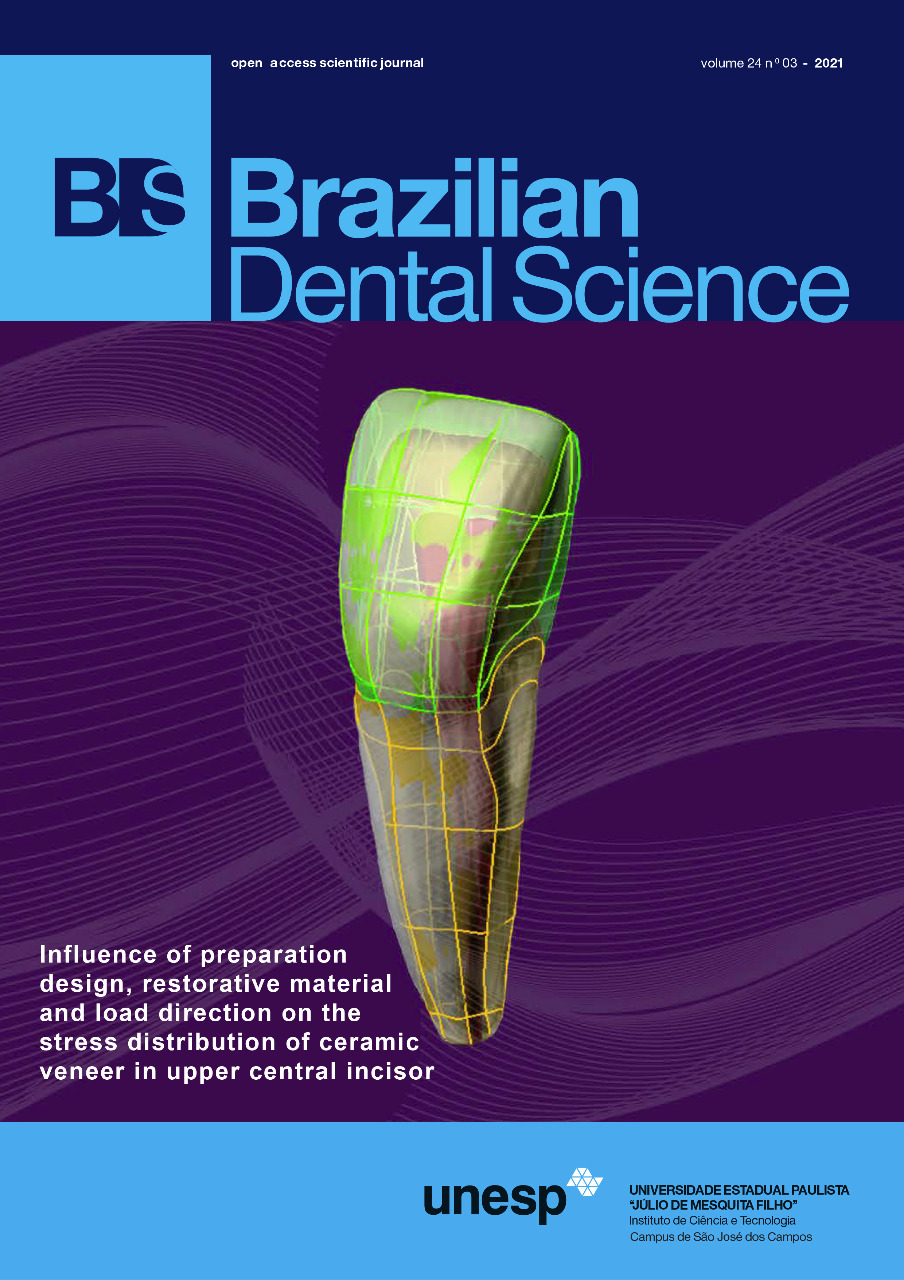The Effect of Different Surface Treatment Protocols on the Shear Bond Strength to Repressed Lithium Disilicate Glass Ceramics
DOI:
https://doi.org/10.14295/bds.2021.v24i3.2462Abstract
Objective: The present study aimed to evaluate the effect of repressing and different surface treatment protocols on the shear bond strength of lithium disilicate glass-ceramics. Material and Methods: A total of 52 lithium disilicate glass-ceramic discs (IPS emax Press, Ivoclar Vivadent) were fabricated using the heat-press technique. The discs were divided into two groups; group (P): discs fabricated from new e.max ingots (n=26), group (R): discs fabricated from reused e.max buttons (n=26). Each group was subdivided into subgroup (E): discs were etched with hydrofluoric acid (9.5%) (n=13), subgroup (S): discs were air-abraded with 110 µm alumina particles. All specimens were subjected to X-ray Diffraction analysis, Scanning Electron Microscope, Energy Dispersive X-Ray, Thermo-Cycling, and Shear Bond Strength Testing. Results: Repressed Etched subgroup (RE) recorded the statistically highest shear bond strength value, followed by the Pressed Etched subgroup (PE), while the statistically lowest shear bond strength value was recorded for the Pressed Air-Abraded subgroup (PS) and Repressed Air-Abraded subgroup (RS). Conclusion: Repressing the leftover buttons for the construction of new lithium disilicate glass-ceramic restorations has no adverse effect on the bond strength of the resin cement to the ceramic. Hydrofluoric acid surface treatment improves the shear bond strength and durability of resin cement bond to both pressed and repressed lithium disilicate glass-ceramic. Air-abrasion cannot be considered as a reliable surface treatment when bonding to lithium disilicate glass-ceramics.
Keywords
Heat pressed; Lithium disilicate glass-ceramics; Repressing; Shear bond strength; Surface treatment.
Downloads
Downloads
Published
Versions
- 2021-07-01 (3)
- 2021-07-01 (2)
- 2021-07-01 (1)
How to Cite
Issue
Section
License
Brazilian Dental Science uses the Creative Commons (CC-BY 4.0) license, thus preserving the integrity of articles in an open access environment. The journal allows the author to retain publishing rights without restrictions.
=================




























